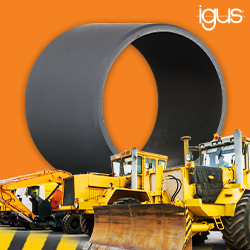Scientists publish roadmap for how AI can help tackle climate change
The scientists and engineers behind the nonprofit Climate Change AI have published a foundational paper on how artificial intelligence can help fight climate change. The ideas in the paper are already being taken up by researchers, practitioners, and policymakers around the world.
A group of prominent scientists and engineers has published a sixty-page, peer-reviewed paper in ACM Computing Surveys detailing how artificial intelligence can be used to fight climate change. The twenty-two person team includes some of the world's leading AI and climate researchers, including Yoshua Bengio, winner of the 2019 Turing Award, and Felix Creutzig, a coordinating lead author of the United Nations' IPCC Sixth Assessment Report.
Since the paper was first circulated as a preprint, the team behind it has coalesced into a nonprofit called Climate Change AI (CCAI), which aims to catalyze impactful work at the intersection of climate change and AI. CCAI offers interactive summaries of the paper; grants, tutorials, workshops, a summer school, and other resources for researchers in relevant fields; a widely read newsletter and blog; and a community platform that brings together experts in AI and areas such as energy, agriculture, and disaster response.
The paper and organization focus on machine learning, a powerful branch of artificial intelligence that can automatically find and leverage patterns in data. "Machine learning can be deployed to help reduce greenhouse gas emissions and build a society that is more resilient to climate change," said David Rolnick, an assistant professor at McGill University and at Mila and co-chair of CCAI. "It can help design better batteries, control heating and cooling systems efficiently, track the effects of a changing climate using satellite imagery, and much more."
The authors emphasize that machine learning is only one piece of the puzzle, and that all applications require cooperation between many stakeholders. "Machine learning is not a silver bullet, but it can play a role in many climate change strategies from policy and engineering," said Lynn Kaack, an assistant professor at the Hertie School and co-chair of CCAI. "It's critical that machine learning experts work with those who deeply understand the problems of climate change to make sure the technology is applied where it can make a difference."
Although the paper was formally published only this month, it has already had a substantial impact as a preprint. It has influenced the most recent IPCC report, research funding programs, technology competitions, and national and international policy strategies. It also led directly to the formation of CCAI.
The authors hope that CCAI will help a wide variety of researchers and practitioners take up the paper's call to action. "By serving as a nexus for collaboration between universities, companies, governments, and NGOs, CCAI empowers meaningful work at the intersection of climate change and machine learning," said Priya Donti, a Ph.D. candidate at Carnegie Mellon University and co-chair of CCAI. "We hope our work will inspire others to leverage their skills to tackle climate change—we need all hands on deck."
For more information or to join the community, please visit CCAI's website at climatechange.ai
Featured Product

